PESTS AND DISEASES OF FORESTRY IN NEW ZEALAND
Look out for poplar sawfly, not known to be established in New Zealand


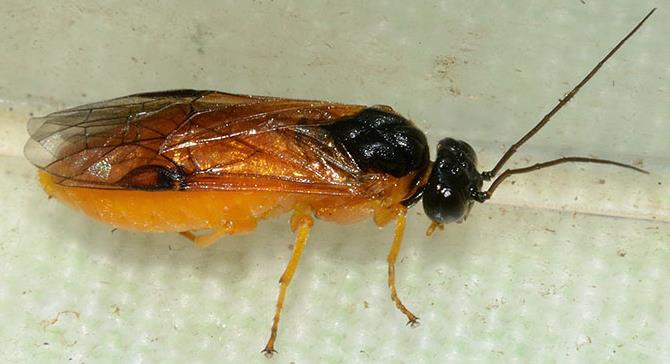
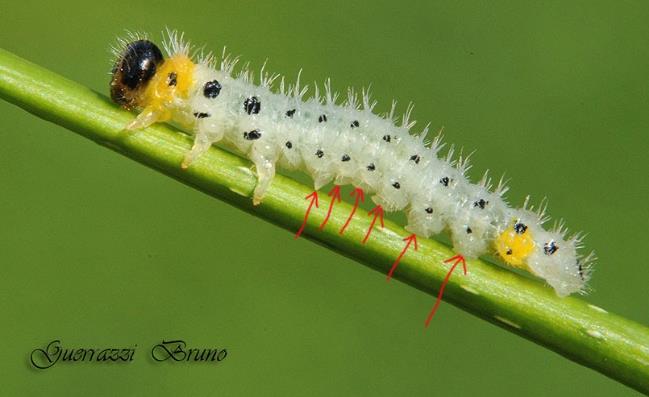
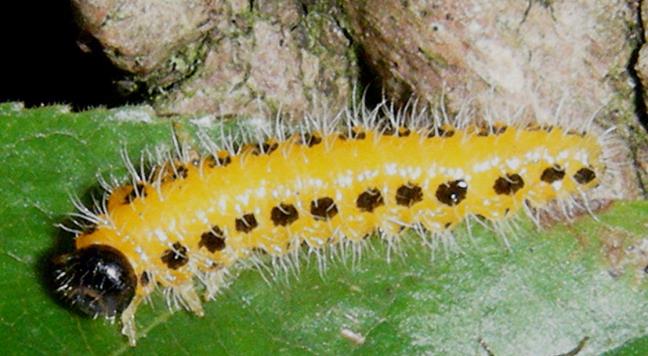
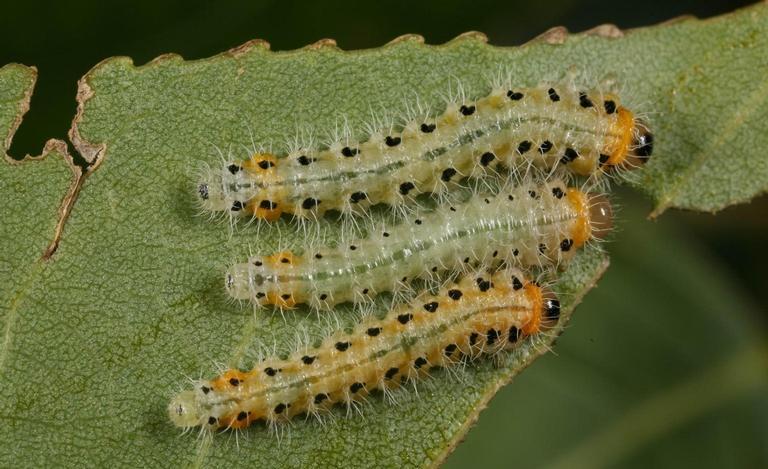
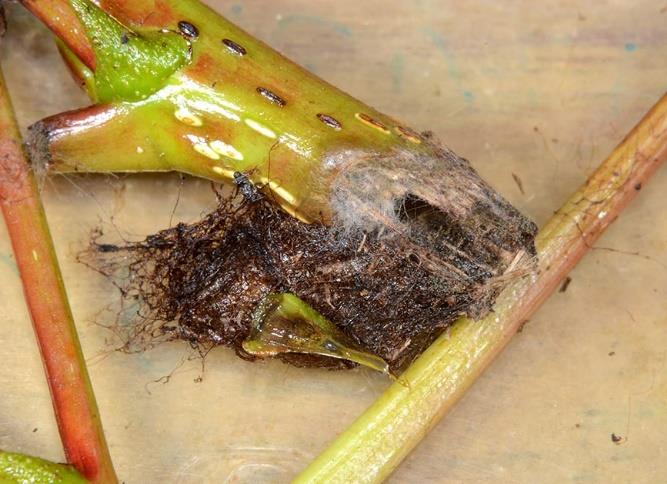
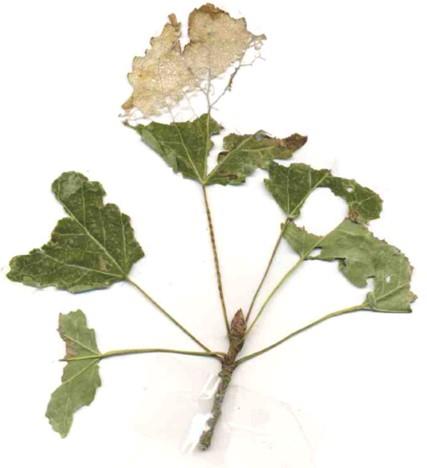
18 February 2019
Recently, a single poplar sawfly, Cladius grandis (Tenthredinidae), larva was detected in a gypsy moth trap in Dunedin. If you believe you have found poplar sawfly please call MPI on 0800 80 99 66.
What does a poplar sawfly look like?
Adults: 6-9mm; overall reddish yellow, head and part of thorax black; wings yellowish hyaline strongly iridescent, venation reddish yellow.
Larvae: up to 16mm; overall yellow with two lateral rows of black spots (dorsal much larger than ventral) and whitish hairs; head blackish and brownish except some yellow spots on the frontal part.
Hosts
Host plants include species from Family Salicaceae: Populus alba, P. balsamifera, P. canadensis, P. dilatata, P. monilifera, P. nigra, P. tremula, P. pyramidalis, Salix caprea (pussy willow).
Where to look?
- eggs are deposited in a row in the leaf petiole, check for lines of elongate raised scars
- leaves bearing eggs are likely to show signs of feeding by the first instar larvae
- larvae feed gregariously and lie side by side on the underside of the leaf
Diagnostic & Surveillance Directorate



